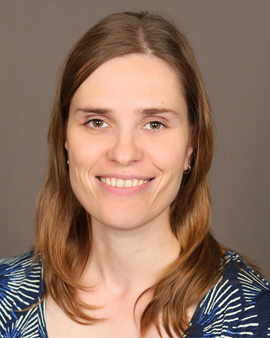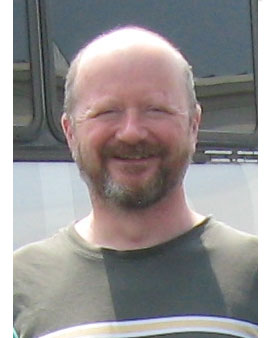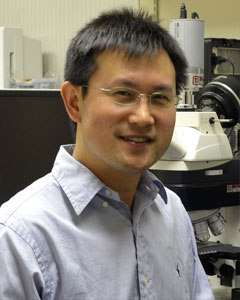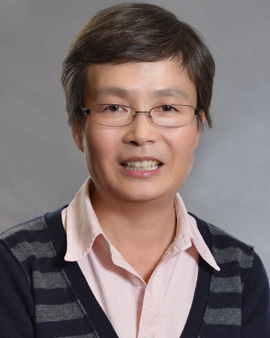Spinal Cord Injury Research Funded by PA Department of Health
Across the United States, there are approximately a quarter of a million residents living with spinal cord injuries, with permanent changes in motor, sensory and autonomic functions below the site of the injury. These changes affect quality of life, often with life-threatening risks that involve high costs to families and society.
The Marion Murray Spinal Cord Research Center, named for one of its founders, Marion Murray, PhD, has evolved into one of the premier spinal cord injury research centers in the world, with innovative and multidisciplinary programs for studying brain and spinal cord circuitry, the pathophysiology of spinal cord injury, and the development of therapeutic strategies to promote recovery of function. It remains the only center of its kind in Pennsylvania and the Mid-Atlantic region. The mission of the Center is to bridge the gap between the discovery phase and clinical application by developing and translating promising research strategies to treat patients whose function has been limited by spinal cord injury.
Investigators in the Center (15 primary faculty members, 10 affiliated members and a staff of more than 20 postdoctoral fellows, graduate students and technicians) apply recent advances in stem cell transplantation, physiology of locomotion, rehabilitation protocols, neuromodulation, neuroengineering, robotic rehabilitation and pharmacological interventions to open new avenues for more effective treatments. These include those lost after spinal cord injury, such as locomotion, sensation and bladder control. Additionally, investigators seek to diminish the secondary consequences of these injuries that affect quality of life, such as pain, autonomic dysreflexia and susceptibility to infection.
Center investigators have collaborated with scientists and clinicians in a variety of disciplines, including neurologists, neurosurgeons, orthopedic surgeons, neuro-radiologists, physical therapists, physiatrists and neuro-urologists, who collectively contribute to the goals of translational research. The Center and its members have been continuously funded by agencies such as the NIH, the Department of Defense, the Pennsylvania Department of Health, Paralyzed Veterans of America, United Spinal Association, International Spinal Research Trust, Christopher and Dana Reeve Paralysis Foundation, and the Craig H. Neilsen Foundation.
The Commonwealth of Pennsylvania’s Department of Health announced in 2019 that they would allocate $1 million per year to fund research in spinal cord injury. The intent is to “provide important new insights into the nature and course of spinal cord injury” and ultimately “promote basic and clinical research for the functional improvement of people with spinal cord injuries.”
Six of the Center’s faculty members were awarded two-year grants, for a total of $1 million in direct research costs, during this program’s recent inaugural funding cycle. These funded projects span a wide variety of high-priority areas related to spinal cord injury, including bladder function, respiration and breathing control, spasticity, enhancing axon regeneration by transplantation of neural stem cells, and enhancing recovery of function and regeneration using robotic rehabilitation and neurostimulation.
The investigators and their projects are:

Tatiana Bezdudnaya, PhD
Tatiana Bezdudnaya, PhD
“Improving Breathing With Limb Muscle Stimulation After Cervical SCI”
Deficits in breathing following cervical spinal cord injury (as was the case for Christopher Reeve, who needed a ventilator) are a life-threatening problem needing urgent attention. Physical exercise can be used as an activity-based therapy to improve breathing after cervical spinal cord injury, but exercise is not always possible for people with these injuries. The objective of the grant is to use electrical stimulation of limbs instead of exercise to treat respiratory dysfunction post-injury. We know that respiratory muscles are controlled by respiratory centers located in the brainstem; injury of the cervical spinal cord disrupts that control, leading to muscle weakness and respiratory deficits. However, neuronal circuits in the spinal cord can also modulate respiration. We hypothesize that limb muscle electrical stimulation can directly activate spinal respiratory circuits, train the whole respiratory network and improve breathing. Therefore, our study will lead to understanding the spinal mechanisms of breathing and developing a new treatment for respiratory dysfunction post-spinal cord injury.

Simon Giszter, PhD
Simon Giszter, PhD
“Enhancing Regeneration Efficacy After SCI With Robot-Rehab Coupled Optogenetics”
The project will examine cortical neurons that have been enhanced by viral therapies to promote regeneration of the tracts important for motor control. First, the project will discover whether this specific treatment also increases the neuron cell body and dendritic arbor size, which could reduce the ease of activation of regenerated pathways, weakening their effectiveness in recovery of function. The working hypothesis is that this undesired effect might then be mitigated by appropriate brain stimulation. The proposed experiments on mitigation will examine the use of imperceptible light delivery (a method called “optogenetics”) to activate the motor cortex — which controls voluntary movement — in rats with spinal cord injury, mimicking stimulation therapies that might be used in the clinic. The objective is to show that the combined regenerative, neurostimulation and robotic rehab therapies will promote the best functional motor outcomes in the spinal cord injury model being investigated.

Shaoping Hou, PhD
Shaoping Hou, PhD
“Rebuilding Supraspinal Regulation to Restore Voluntary Micturition Reflex”
This research will examine whether transplanting brainstem neural stem cells into the injured spinal cord of a rat model will reestablish the micturition reflex pathways, which control urination. This would help restore voluntary urinary function, which is an important issue of overall quality of life, as well as for prevention of urinary infections, for patients with spinal cord injury. This project combines a variety of expertise in basic and pre-clinical neuroscience and urology with the goal of forming a relay to allow signals from higher brain centers across the site of injury to the lower spinal cord in order to restore or improve voluntary micturition function.

Ying Jin, PhD
Ying Jin, PhD
“Glial Progenitor Grafts to Promote Regeneration and Functional Recovery After SCI”
Cell transplantation is one of the most promising approaches to spinal cord injury because of the potential for cell replacement, neuroprotection and restoration of connectivity leading to recovery of function. The purpose of this proposal is to test the efficacy of a combination strategy for therapeutic intervention using transplants of human glial restricted progenitor (GRP) cells that have already been approved for clinical trials. We will combine these GRP cells with a bio-scaffold that improves survival of transplants, together with clinically relevant exercise/training that can influence the remodeling of axonal connections. The working hypothesis is that this combination will promote functional recovery in cervical contusion injury in an animal model. The experiments will also test whether efficacy varies based on the sex and age of the animal models.

Michael Lane, PhD
Michael Lane, PhD
“Respiratory Training Promotes Plasticity and Recovery After SCI”
One of the most devastating consequences of cervical-level spinal cord injury is damage to the phrenic motor network, which controls the diaphragm (the primary muscle of breathing). This leads to life-threatening impairments in breathing and can result in a need for ventilator assistance. Impaired breathing remains a leading cause of morbidity and mortality post-spinal cord injury, and consequently there is an urgent need to develop strategies for improving function for people with acute and chronic spinal cord injury. This research aims to test a novel approach for promoting recovery of breathing by a unique training strategy that intermittently stimulates breathing, driving the respiratory muscles and networks that control them to be more active. This increased activity harnesses any spared residual networks and muscle function, to promote greater recovery of function.

Liang Oscar Qiang, MD, PhD
Liang Oscar Qiang, MD, PhD
“Gene Therapy via Spastin Overexpression to Promote Axon Regrowth for SCI Repair”
The injured adult spinal cord is incapable of self-repairing the damaged neurons and reconnecting disrupted axons, which leads to paralysis and other functional deficits. We are studying microtubules that form the architecture of the cell and act like tracks to move along critical cell constituents including spastin, which cuts long microtubules into mobile sections. The hypothesis of this grant is that higher spastin levels will lead to greater mobility of microtubules, which renders the axon more capacity to regrow after injury. The plan is to test whether increased spastin levels via a gene-therapy method will promote nerve regeneration in a rat spinal cord injury model. The longer-term plan is to use combinatorial therapies in which spastin-based gene therapy will be combined with another approach of proven benefit for spinal cord injury.
Back to Top